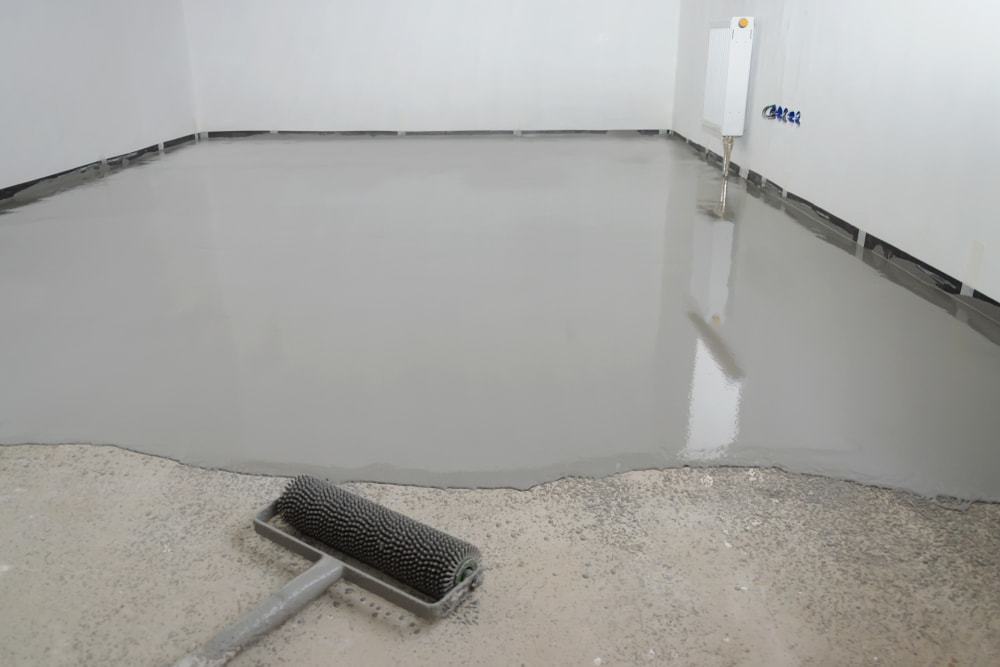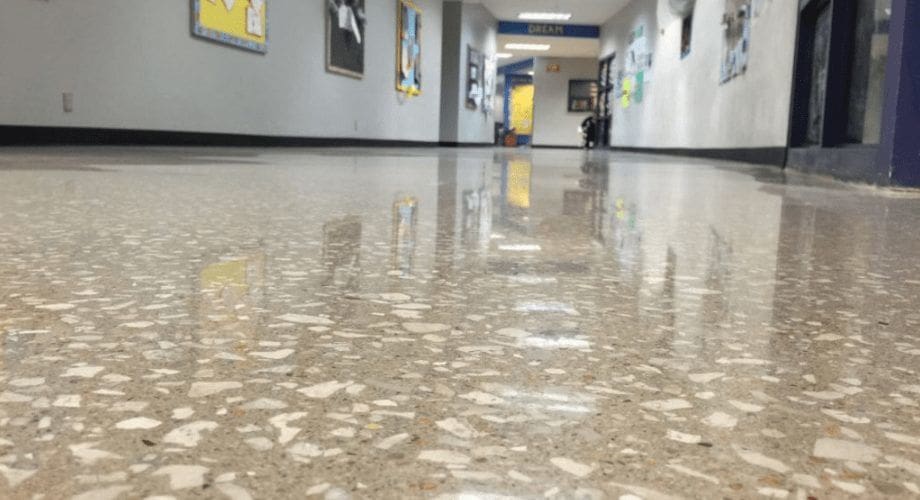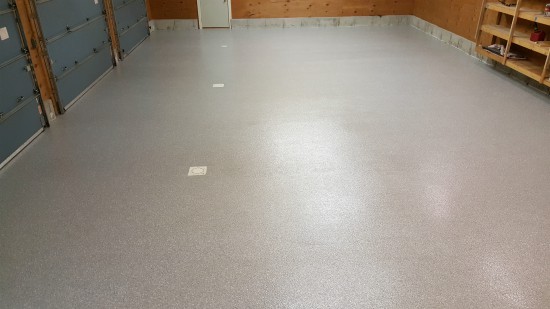Introduction to Epoxy Flooring on Concrete
Epoxy flooring on concrete has emerged as a popular choice for both residential and commercial spaces due to its durability and aesthetic appeal. This innovative flooring solution offers a range of benefits that make it an attractive option for homeowners, business owners, and interior designers alike. Below are the key features of epoxy flooring and why it has gained such widespread popularity.
- Enhanced Durability: One of the primary reasons why epoxy flooring on concrete is highly sought after is its exceptional durability. Epoxy coatings create a strong and resilient surface that can withstand heavy foot traffic, impacts, and abrasions. This makes it an ideal choice for high-traffic areas such as garages, warehouses, and industrial facilities. Epoxy flooring also resists stains, chemicals, and moisture, making it suitable for areas prone to spills or exposure to harsh substances.
- Improved Safety: Epoxy flooring not only enhances the durability of the concrete surface but also improves safety. The smooth and seamless finish of epoxy coatings eliminates the risks of tripping or slipping on uneven surfaces, making it a great option for homes with children or elderly individuals. Additionally, epoxy coatings can be customized with anti-slip additives, providing an extra layer of safety in areas prone to wet conditions or where slip resistance is crucial, such as kitchens or commercial kitchens.
- Aesthetic Appeal: Beyond its practical benefits, epoxy flooring also adds a touch of elegance and sophistication to any space. With a wide range of colors, patterns, and finishes available, epoxy coatings can be customized to suit any design aesthetic. Whether you prefer a sleek and modern look or a more rustic and industrial feel, epoxy flooring offers endless possibilities for creating a visually stunning environment.
- Easy Maintenance: Maintaining epoxy flooring is a breeze, making it a convenient choice for busy homeowners and business owners. The smooth and non-porous surface of epoxy coatings prevents dirt, dust, and grime from penetrating the flooring, allowing for easy cleaning with just a mop and mild detergent. Unlike other flooring options that require frequent waxing or polishing, epoxy flooring retains its shine and luster for years with minimal effort.
- Cost-Effectiveness: Another advantage of epoxy flooring is its cost-effectiveness. Compared to traditional flooring materials such as hardwood or tile, epoxy flooring offers a more affordable option without compromising on quality or durability. Additionally, the long lifespan of epoxy coatings means that you won’t have to worry about frequent repairs or replacements, saving you money in the long run.

Step-by-Step Guide to Achieving a Perfect Epoxy Flooring Finish
Installing epoxy flooring on concrete may seem like a daunting task, but with the right guidance and preparation, it can be a rewarding DIY project. We will provide you with a step-by-step guide to help you achieve a perfect epoxy flooring finish.
Surface Preparation: Before you begin the installation process, it is crucial to prepare the concrete surface properly. Start by cleaning the floor thoroughly, and removing any dirt, dust, or grease. Use a degreaser or mild detergent to ensure the surface is free from any contaminants. Next, repair any cracks or damages on the concrete using a suitable patching compound. Finally, grind the surface to create a rough texture that will allow the epoxy to adhere properly.
Primer Application: Once the surface is prepared, the next step is to apply a primer. The primer acts as a bonding agent between the concrete and the epoxy coating, ensuring a strong and long-lasting adhesion. Mix the primer according to the manufacturer’s instructions and apply it evenly using a roller or brush. Make sure to work in small sections to avoid the primer drying before you can apply the epoxy.
Epoxy Mixing: After the primer has dried, it’s time to mix the epoxy. Follow the instructions provided by the manufacturer carefully. Typically, epoxy consists of two components: resin and hardener. Mix the two components together thoroughly using a drill with a paddle attachment. Ensure that the mixture is well-blended to achieve a consistent finish.
Application of Epoxy: Once the epoxy is mixed, pour it onto the prepared surface and spread it evenly using a roller or squeegee. Work in small sections to ensure proper coverage. Use a brush to cut in along the edges and corners. If you want to add decorative flakes or aggregates, sprinkle them onto the wet epoxy according to your desired pattern or design.
Allow for Curing: After the epoxy is applied, allow it to cure according to the manufacturer’s instructions. This usually takes around 24 to 48 hours, depending on the temperature and humidity of the environment. During this time, ensure that the area is well-ventilated and free from any foot traffic or other disturbances that may disrupt the curing process.
Optional Topcoat: For added protection and a glossy finish, you may choose to apply a topcoat. The topcoat acts as a sealant, providing an extra layer of durability and enhancing the aesthetic appeal of the flooring. Follow the manufacturer’s instructions for mixing and applying the topcoat. Allow it to cure fully before subjecting the floor to regular use.
Maintaining Epoxy Flooring: Tips for Longevity and Easy Upkeep
Epoxy flooring is known for its durability and low maintenance requirements. However, to ensure its longevity and keep it looking its best, it is important to follow proper maintenance practices. We will provide you with some essential tips for maintaining epoxy flooring.
Regular Cleaning: One of the key aspects of maintaining epoxy flooring is regular cleaning. Sweep or vacuum the floor regularly to remove loose dirt and debris. This prevents them from scratching the surface when walked upon. For more thorough cleaning, use a mop and a mild detergent mixed with water. Avoid using harsh chemicals or abrasive cleaners as they can damage the epoxy coating.
Prompt Spill Cleanup: Epoxy flooring is resistant to stains, but it is still important to clean up spills promptly. Liquids like oil, chemicals, or acidic substances can potentially stain or damage the epoxy surface if left unattended. Use a clean cloth or paper towel to blot up spills immediately. If necessary, use a mild detergent to clean the area and rinse it thoroughly with water.
Avoid Heavy Impact or Scratching: While epoxy flooring is highly durable, it is not completely impervious to damage. Avoid dragging heavy objects across the floor or dropping heavy items that can cause impact damage. Place furniture pads or coasters under the legs of furniture to prevent scratching. If you have wheeled equipment or vehicles, use non-marking, soft rubber casters to minimize the risk of damage.
Regular Inspections: Periodically inspect your epoxy flooring for any signs of wear, damage, or delamination. Look for any chips, cracks, or peeling in the coating. If you notice any issues, address them promptly to prevent further damage. Small repairs can be done using epoxy patching compounds or touch-up kits provided by the manufacturer. For more extensive repairs, it is recommended to consult with professionals.
Avoid Harsh Chemicals: While epoxy flooring is resistant to many chemicals, it is still important to avoid using harsh or abrasive chemicals for cleaning. Chemicals like bleach, ammonia, or acidic cleaners can degrade the epoxy coating over time. Instead, use mild, pH-neutral cleaners that are specifically recommended for use on epoxy surfaces. Always follow the manufacturer’s guidelines for cleaning products.
Protective Measures: Taking preventive measures can go a long way in maintaining the quality of your epoxy flooring. Use doormats or rugs at entryways to trap dirt and prevent it from being tracked onto the floor. Place mats or trays under heavy machinery or vehicles to catch any leaks or spills. Consider using walk-off mats in high-traffic areas to reduce wear and tear on the epoxy surface.
Epoxy Flooring Applications: Exploring the Versatility and Creative Possibilities
Epoxy flooring is not only durable and easy to maintain, but it is also incredibly versatile, making it suitable for a wide range of applications. We will explore the various ways in which epoxy flooring can be used, showcasing its versatility and creative possibilities.
Residential Spaces: Epoxy flooring has gained popularity in residential settings due to its durability and aesthetic appeal. It can be used in various areas of the home, ranging from basements and garages to kitchens and living rooms. In basements, epoxy flooring provides a waterproof and mold-resistant solution, protecting the space from moisture damage. In garages, it withstands the weight of vehicles and resists stains from oil and other automotive fluids. In kitchens and living rooms, epoxy flooring offers a seamless and easy-to-clean surface that enhances the overall design of the space.
Commercial and Industrial Facilities: Epoxy flooring is widely used in commercial and industrial settings due to its exceptional durability and ability to withstand heavy foot traffic or equipment. In warehouses and manufacturing facilities, epoxy flooring provides a strong and resistant surface that can handle constant movement, impacts, and chemical exposures. It also improves safety by offering slip-resistant properties and clearly defined demarcation lines. In retail spaces, epoxy flooring can be customized with colors and patterns to create a visually appealing environment that aligns with the brand’s image.
Healthcare and Educational Institutions: Epoxy flooring is also suitable for healthcare facilities and educational institutions. In hospitals and clinics, epoxy flooring offers a hygienic and easy-to-clean surface that resists the growth of bacteria, making it ideal for sterile environments. Its seamless and non-porous nature prevents the accumulation of dirt, dust, or allergens, contributing to a healthier space. In schools and universities, epoxy flooring can be used in classrooms, laboratories, corridors, and gymnasiums, providing a durable and low-maintenance solution that can withstand heavy use.
Hospitality and Entertainment Venues: Epoxy flooring is increasingly being used in the hospitality and entertainment industry due to its ability to create visually stunning spaces. In hotels, resorts, and restaurants, epoxy flooring can be customized with decorative flakes or metallic pigments to add a touch of elegance and sophistication. It can be used in lobbies, dining areas, bars, or even dance floors, creating a durable and attractive surface for guests to enjoy. In entertainment venues such as theaters or concert halls, epoxy flooring offers excellent acoustics and can be customized with logos or designs to enhance the overall atmosphere.
Artistic and Creative Applications: Beyond its practical applications, epoxy flooring also offers a canvas for artistic expression. Artists and designers have embraced epoxy flooring as a medium for creating unique and visually striking designs. Epoxy can be manipulated to create 3D effects, swirls, or even resemble natural materials like marble or granite. This opens up a world of creative possibilities for installations in galleries, museums, or even residential spaces where the flooring becomes a focal point of artistic expression.
How to Remove Epoxy Flooring from Concrete – Decorative Concrete
Epoxy Floor Installation Over Old Concrete
China Waterproof Metallic Epoxy Flooring for Concrete and Cement
Strong Concrete Foundations with Epoxy Floors Nashville TN
Concrete Floor Epoxy in Maine installed by Dayu0027s Concrete Floors, Inc.
Related Posts:







